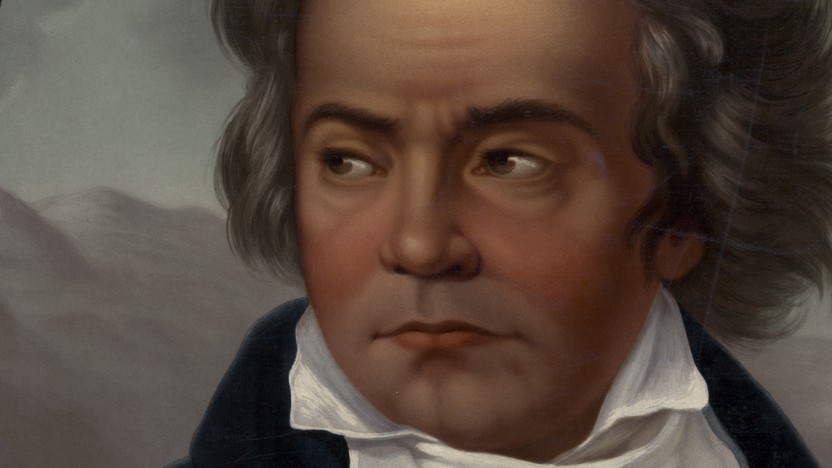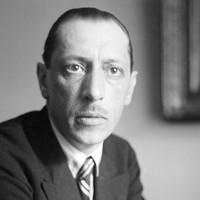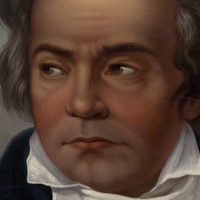Beethoven’s Fourth Symphony

Sponsored By
- January 9, 2015


Sponsored By

 Listen to Audio
Listen to Audio
In 1939, Igor Stravinsky suffered what he called “the most tragic year of my life.” His daughter, wife and mother all died within months of each other, and the outbreak of World War II sent him into exile for the second time, from his adopted home in Paris to the United States. He married his longtime mistress Vera in 1940, and together they started a new life in West Hollywood in 1941. Stravinsky soon accepted a commission from a local conductor, Werner Janssen, and began what would be his first major work composed entirely in the United States, Danses concertantes.
The musical language of Danses concertantes is typical of Stravinsky’s neoclassical style, full of quick character changes, crisp rhythms, bone-dry textures and tight harmonies. With its small orchestra and ample instrumental solos, Danses concertantes exhibits a kinship to the Dumbarton Oaks Concerto from 1938; the two works have been called Stravinsky’s Brandenburgs, after Johann Sebastian Bach’s famous set of mixed-ensemble concertos. Even though Stravinsky designed Danses concertantes for the concert stage, it did not take long for its inherent dance sensibility to be recognized. Stravinsky’s friend and longtime collaborator George Balanchine was the first to choreograph the work when he created a version in 1944 for the Ballet Russe de Monte Carlo, a successor to Diaghilev’s Ballets Russes.
Danses concertantes begins with an introductory March, its steady meter obscured by shifting layers and displaced accents. The only extended solo in this preparatory movement is for the leader of the six-member violin section. The second movement is a Pas d’action, borrowing a term from ballet for an ensemble dance. The third movement, taking the form of a theme and variations, is the longest and most abstracted of the work. The thematic section is tender and diffuse, and the playful variations and shuffling coda bear little surface resemblance to the theme. The Pas de deux borrows another dance convention: a dance for two, often for the romantic leads. Here, the oboe and clarinet take the spotlight, their duet surrounded by other reveries. The concluding March revisits the opening music.
Aaron Grad ©2025
 Listen to Audio
Listen to Audio
Shaker Loops, born out of the large-scale Minimalism developed by Steve Reich and Philip Glass in the 1970s, was a breakthrough work for the young John Adams. In its initial form, it was a string quartet titled Wavemaker; as Adams explained in a program note, “I gradually developed a scheme for composing that was partly indebted to the repetitive procedures of Minimalism and partly an outgrowth of my interest in waveforms.” Unsatisfied with his first attempt, expanded the score into a string septet (and ultimately string orchestra) and changed the title to Shaker Loops.
“The ‘loops’ idea”, he wrote, “was a technique from the era of tape music where small lengths of prerecorded tape attached end to end could repeat melodic or rhythmic figures ad infinitum. (Steve Reich’s It’s Gonna Rain is the paradigm of this technique.) The Shakers got into the act partly as a pun on the musical term ‘to shake,’ meaning either to make a tremolo with the bow across the string or else to trill rapidly from one note to another.
“The flip side of the pun was suggested by my own childhood memories of growing up not far from a defunct Shaker colony near Canterbury, New Hampshire. Although, as has since been pointed out to me, the term ‘Shaker’ itself is derogatory, it nevertheless summons up the vision of these otherwise pious and industrious souls caught up in the ecstatic frenzy of a dance that culminated in an epiphany of physical and spiritual transcendence. This dynamic, almost electrically charged element, so out of place in the orderly mechanistic universe of Minimalism, gave the music its raison d’être and ultimately led to the full realization of the piece.”
Aaron Grad ©2018
 Watch Video
Watch Video
Ludwig van Beethoven’s first two symphonies took their cues from Franz Joseph Haydn, the formidable “father of the symphony” and Beethoven’s teacher for a short while after he moved to Vienna. Soon enough, Beethoven honed a symphonic voice that eclipsed even Haydn’s in its scale and grandeur, beginning with the massive Symphony No. 3 (Eroica) from 1803 and continuing in the fateful Symphony No. 5 from 1808. Sandwiched between those landmark symphonies was a smaller specimen, the Symphony No. 4 in B-flat Major, underscoring Beethoven’s lasting debt to Haydn.
Beethoven composed the Fourth Symphony in mid-1806, and he first unveiled it at a private concert in March 1807. Close followers of Haydn’s London symphonies might have noted Beethoven’s nod to the Symphony No. 102, which likewise begins with a held B-flat in octaves. Whereas Haydn made a subtle detour to B-flat minor in his introduction, Beethoven fully embraced the move to the minor scale, until the harmonies sneak back to the major key via one of the score’s many slippery and surprising transitions, launching the Allegro vivace body of the movement.
The Adagio begins with an introductory figure that seems to have lingered from the end of the first movement, preparing the way for a sweet, singing melody. The third movement was labeled a Minuet, but the quick and boisterous music is really a scherzo in all but name, representing Beethoven’s faster and wilder take on Haydn’s dancing diversions.
Beethoven’s finale is full of Haydn’s impish wit, and it saves the best punch line for the end, when the violins, as if thoroughly exhausted, slowly trudge through the main theme one last time. After a similarly lethargic response from the bassoons and then the cellos and basses, the group rallies to end the symphony with an energetic flourish.
Aaron Grad ©2022
This concert is part of our complete Beethoven symphony cycle.
Get driving directions and find nearby parking.
Find dining options close to the venue.
View seating charts to find out where you'll be seating.
Get driving directions and find nearby parking.
Find dining options close to the venue.
View seating charts to find out where you'll be seating.
